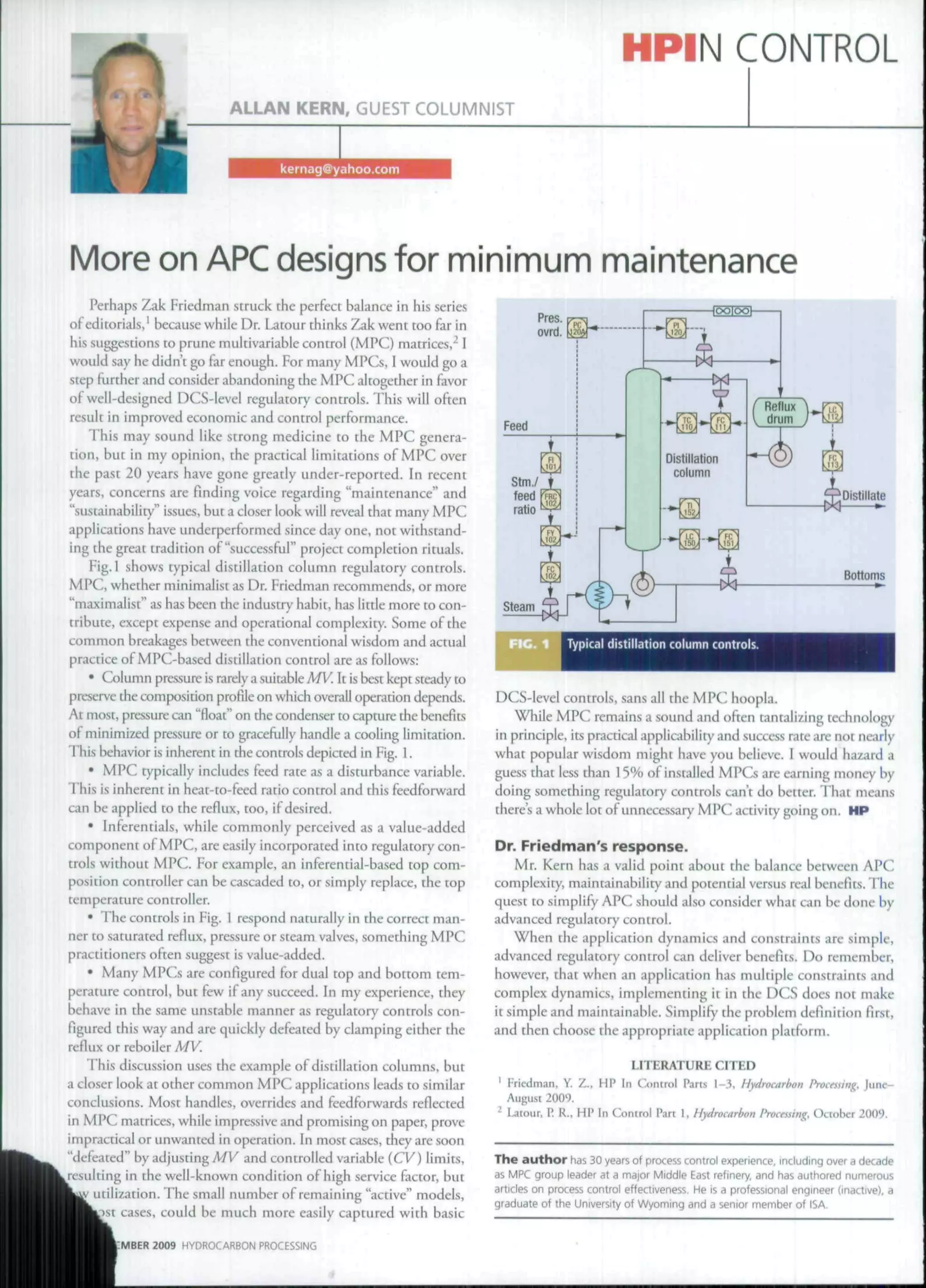The document discusses minimizing the use of model predictive control (MPC) systems and instead relying more on regulatory controls at the distributed control system (DCS) level. It argues that MPC systems often underperform and are more complex and expensive to maintain than DCS controls. For many distillation column applications, the standard DCS controls can achieve similar or better performance than MPC without added complexity. Less than 15% of installed MPC systems are actually providing benefits over what standard DCS controls can deliver. Simpler regulatory controls at the DCS level may be sufficient for many applications currently using MPC.

